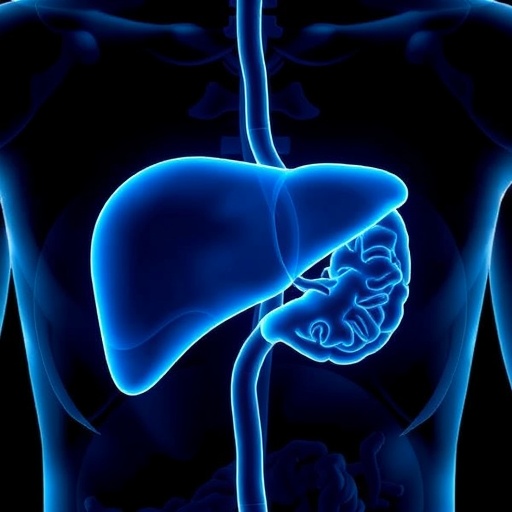In a groundbreaking study poised to reshape our understanding of infectious disease dynamics across Africa, researchers led by Thystrup, Gobena, and Salvador have employed cutting-edge metagenomics and whole-genome sequencing (WGS) to illuminate the complex landscape of enteric pathogens circulating through diverse environmental, animal, and human reservoirs. Published in Nature Communications in 2025, this pivotal research leverages high-resolution genomic technologies to characterize these frequently underestimated yet globally impactful pathogens, with profound implications for disease surveillance, outbreak response, and public health interventions throughout the continent.
Enteric pathogens, responsible for a staggering global burden of diarrheal diseases and other gastrointestinal infections, have posed persistent challenges to health systems, especially in regions where sanitation infrastructure is limited. Africa, with its complex interplay of urban, rural, livestock, and wildlife interfaces, presents a unique epidemiological puzzle. The study at hand meticulously dissects this complexity by applying metagenomic sequencing to samples obtained from a multitude of sources—including human patients, livestock, water supplies, and environmental substrates—thereby enabling an unprecedented glimpse into pathogen diversity, distribution, and genomic characteristics in situ.
At the core of this research is metagenomics, an innovative approach that sequences genetic material directly from environmental samples without the need for prior cultivation of organisms. This technique circumvents limitations posed by traditional microbial culture methods, which often fail to capture the full spectrum of microbial diversity. By integrating metagenomics with whole-genome sequencing of isolated strains, the research team was able to cross-validate and enhance the resolution of pathogen identification, revealing not only the presence of known enteric bacteria and viruses but also uncovering previously unrecognized variants and co-infections.
One of the standout revelations from this investigation pertains to the widespread and heterogeneous distribution of key enteric bacterial pathogens, such as Escherichia coli, Salmonella species, and Shigella. Detailed genomic analyses highlighted significant genetic diversity within these taxa, showcasing distinct regional clades and evidence of horizontal gene transfer events, likely driven by environmental pressures and human-animal interactions. These findings challenge simplistic models of pathogen transmission and underscore a dynamic evolutionary landscape that may influence virulence, antimicrobial resistance, and transmissibility.
The inclusion of viruses in the metagenomic dataset further expands understanding of the enteric disease ecosystem. The researchers identified a diverse array of enteric viruses, including multiple astroviruses, noroviruses, and rotaviruses, some exhibiting novel genetic constellations not previously cataloged in African settings. These viral findings have critical public health implications, as enteric viruses are often responsible for sporadic outbreaks and sustained high morbidity, particularly among vulnerable populations such as young children and immunocompromised individuals.
Environmental metagenomics played a pivotal role in this study, revealing frequent contamination of water sources with enteric pathogens and antimicrobial resistance genes. The analysis illustrated a web of environmental reservoirs where pathogens persist, evolve, and potentially amplify transmission risks. Specifically, water samples from rural and peri-urban areas showed a concerning prevalence of multi-drug resistant Salmonella strains, a phenomenon likely exacerbated by untreated wastewater runoff and inadequate sanitation facilities. This environmental dimension sheds light on the critical need for integrated water, sanitation, and hygiene (WASH) strategies as cornerstones for enteric disease control.
Importantly, the study also unraveled the intricate zoonotic transmission pathways that facilitate spillover of pathogens from animals to humans. By sequencing isolates from livestock—primarily cattle, poultry, and small ruminants—the researchers identified overlapping genomic signatures with human clinical isolates, indicating bidirectional transmission and shared pathogen reservoirs. This finding corroborates a One Health framework, emphasizing that human health cannot be dissociated from animal health and environmental factors, particularly in agricultural communities where close proximity to farm animals is commonplace.
The application of whole-genome sequencing enabled a refined dissection of antimicrobial resistance (AMR) determinants embedded within enteric pathogens. The team cataloged an alarming spectrum of resistance genes, including extended-spectrum beta-lactamases (ESBLs), carbapenemases, and plasmid-mediated quinolone resistance factors. The genomic contexts of these genes revealed their mobility via plasmids and transposons, facilitating rapid dissemination across bacterial populations. Such insights are invaluable for guiding antimicrobial stewardship policies and tailoring empirical treatment protocols, especially in low-resource settings where diagnostic infrastructure is limited.
A unique strength of this research lies in its pan-African geographic scope, incorporating samples from multiple countries and diverse ecological zones. This breadth allowed characterization of regional variations in pathogen populations, shedding light on epidemiological trends shaped by climatic conditions, human mobility, dietary habits, and socio-economic factors. For instance, certain pathogen lineages were more prevalent in arid northern regions, while others dominated humid equatorial zones, implicating environmental selection pressures and population-specific exposures.
The integration of temporal data permitted the detection of evolutionary trajectories and outbreak signatures. Longitudinal sampling and sequencing revealed fluctuations in pathogen community composition correlating with seasonal patterns and public health interventions. Through phylogenomic analyses, subtle changes in allele frequency and emergence of novel clones were traced, illustrating the dynamic nature of enteric pathogen populations and highlighting opportunities for early outbreak detection through genomic surveillance.
From a methodological standpoint, the study pushed the envelope in bioinformatics analytics. The team developed customized pipelines for metagenomic assembly, binning, and variant calling, adapted to handle the complex mixtures characteristic of environmental and clinical specimens. These tools not only improved taxonomic resolution but also enhanced the detection of low-abundance pathogens and resistance genes, providing a comprehensive genomic snapshot akin to a microbial hologram of the African enteric disease landscape.
The implications of this research extend beyond academic interest. By bridging the gap between genome science and public health, the findings advocate for routine implementation of metagenomics and WGS in pathogen monitoring frameworks. Real-time genomic data can revolutionize outbreak management, facilitate source tracing, and inform vaccine design by pinpointing locally circulating strains and their antigenic repertoires. Moreover, identification of environmental hotspots for pathogen emergence points to targeted sanitation upgrades and community health campaigns.
Collaboration across sectors emerged as a vital component of this initiative. The successful collection, sequencing, and analysis of thousands of samples required coordination between hospitals, veterinary clinics, environmental agencies, and local communities. Building such integrated networks is pivotal for sustainable disease surveillance systems that are responsive, inclusive, and contextually informed. The study models how genomics-driven One Health collaborations can be mobilized to address infectious disease threats holistically.
As global pandemics continue to underscore the interconnectivity of human and environmental health, this research offers a timely blueprint for leveraging next-generation sequencing to unravel pathogen ecology and evolution at unprecedented scales. Its insights pave the way for precision epidemiology tailored to the African context, informing strategies that could mitigate the disproportionate burden of enteric infections borne by the continent’s populations.
Looking forward, the authors suggest further expansions using real-time metagenomic sequencing combined with artificial intelligence-based analytics to enhance predictive modeling of pathogen emergence. Integration with socio-behavioral data, climate information, and mobility patterns could refine risk assessments and facilitate proactive interventions. This research heralds a new era in infectious disease research — one where genomics, ecology, and public health converge to save lives and improve global health equity.
In conclusion, Thystrup, Gobena, Salvador, and their team’s landmark investigation exemplifies how sophisticated genomic tools can unravel the hidden complexity of enteric pathogens circulating across Africa. It challenges researchers, policymakers, and healthcare providers to embrace genomic epidemiology as an indispensable pillar of infectious disease control. By illuminating the genetic underpinnings and environmental contexts of these pathogens, the study empowers a future where rapid detection, tailored interventions, and collaborative health strategies can disrupt the cycles of infection and improve outcomes for millions.
Subject of Research:
Genomic characterization of enteric pathogens across human, animal, and environmental sources in Africa using metagenomics and whole-genome sequencing.
Article Title:
Using metagenomics and whole-genome sequencing to characterize enteric pathogens across various sources in Africa.
Article References:
Thystrup, C., Gobena, T., Salvador, E.M. et al. Using metagenomics and whole-genome sequencing to characterize enteric pathogens across various sources in Africa. Nat Commun (2025). https://doi.org/10.1038/s41467-025-66400-9
Image Credits: AI Generated
Tags: diarrheal disease burdendisease surveillance strategiesenteric pathogen diversity in Africaenvironmental pathogen reservoirsgenomic technologies in epidemiologyinfectious disease dynamics researchinnovative genomic sequencing techniqueslivestock and wildlife disease interfacesmetagenomics in public healthoutbreak response in developing regionssanitation challenges in Africawhole-genome sequencing applications





